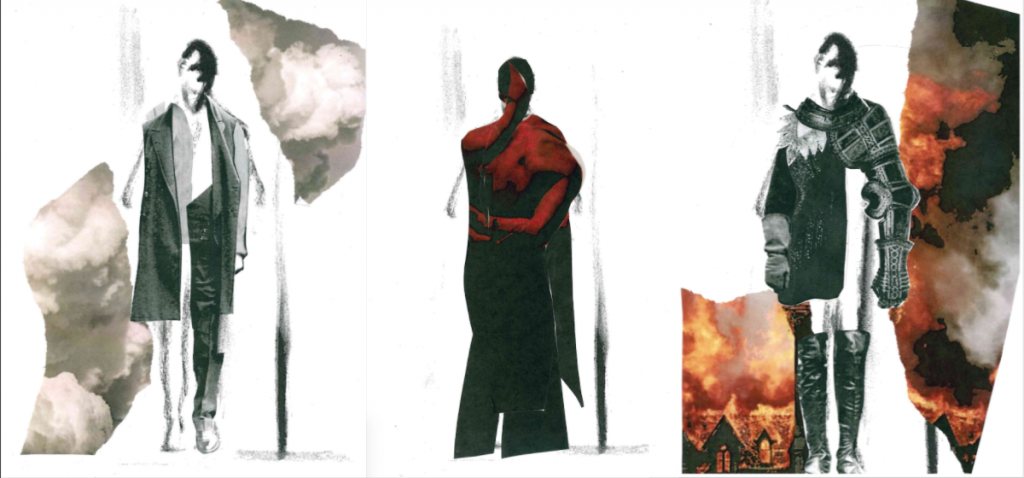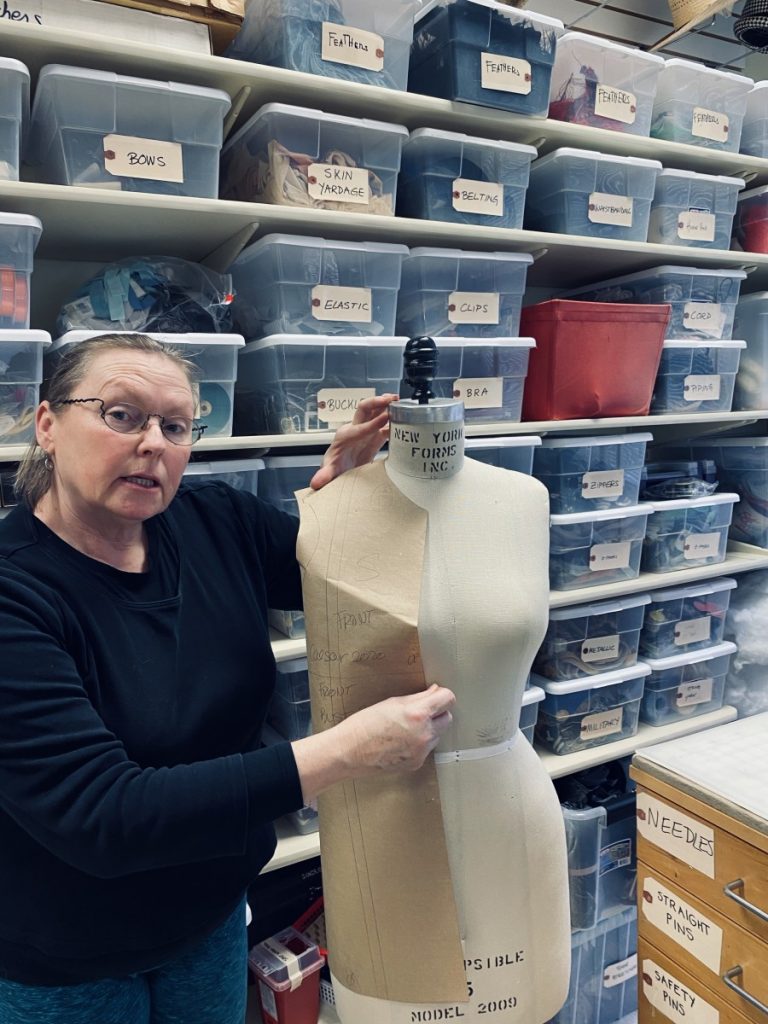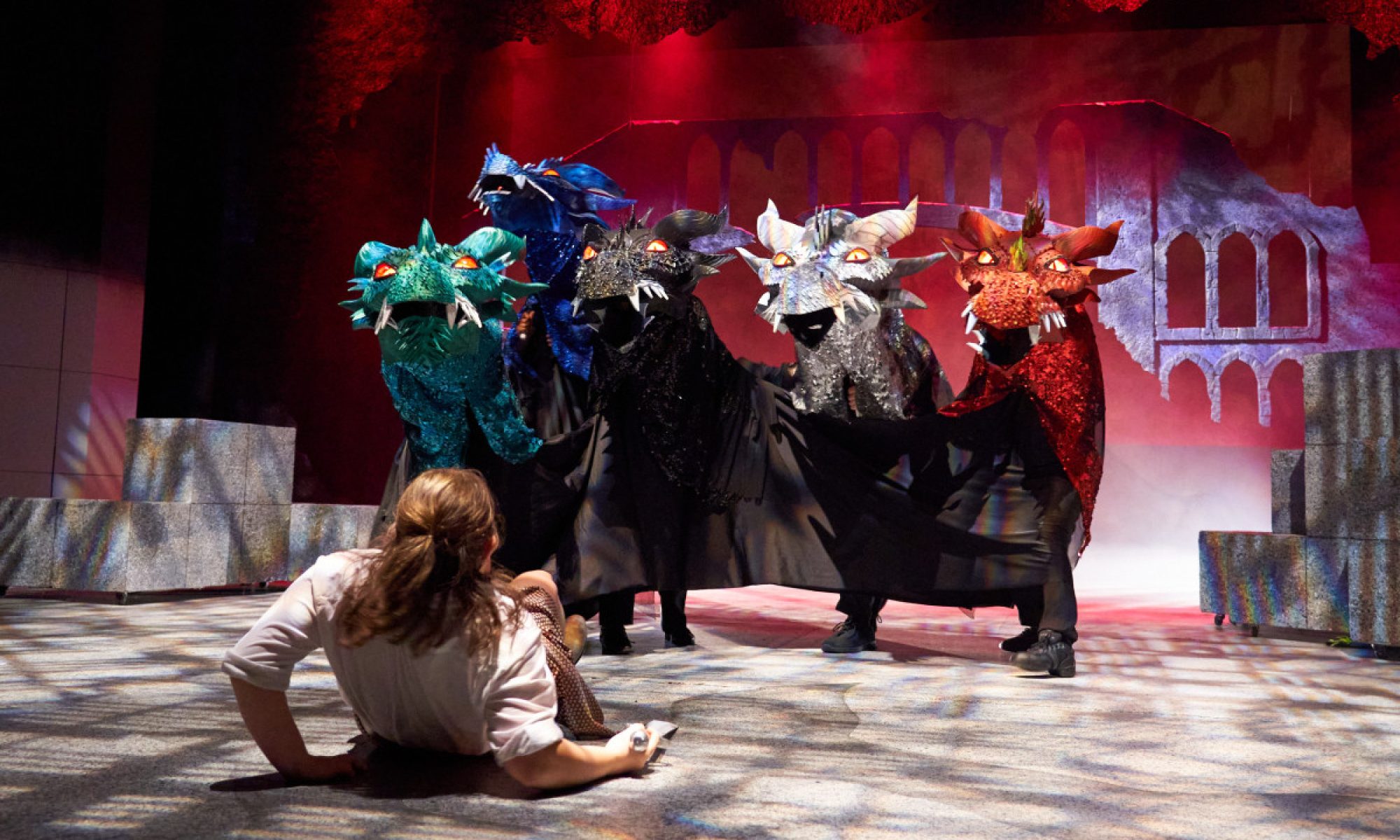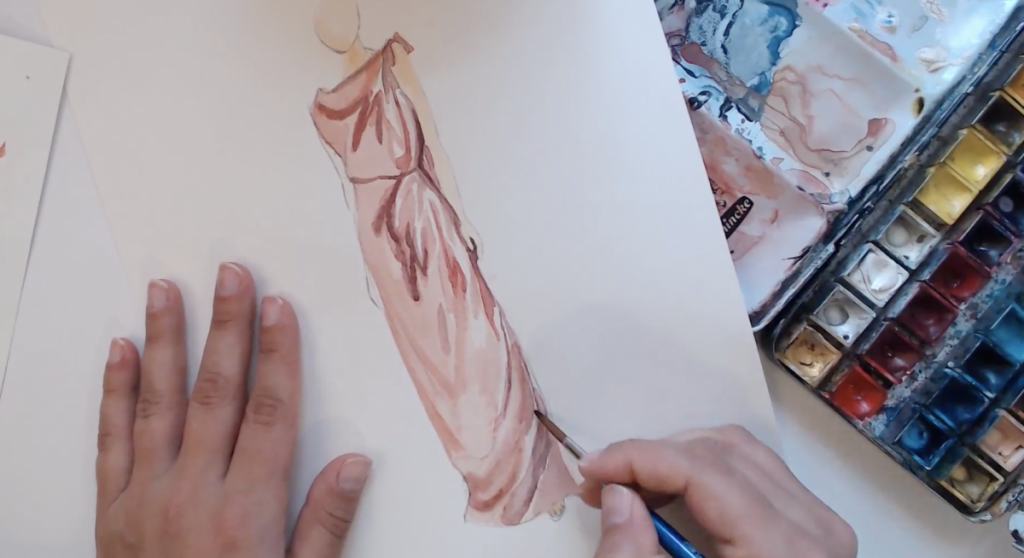Check out the feature by Middlebury Magazine on faculty member Mira Veikley’s transition to remote teaching this past spring.
Julius Caesar Set Design
The following images were provided by the production’s Scenic Designer, Mark Evancho, to show his process in creating the set model.
The set design started with ideas and inspiration from MC Escher. With his 2D optical illusion of staircases and forms dissolving into other forms, we tried to create a world of shapes and forms moving into a 3D optical illusion. Escher’s early studies of blocks, tiling, and lattices, started my thought process, and were the basis for structure created in the model.

The above image is a photograph of Scenic Designer Mark Evancho’s set model.
Initial Design Process for Julius Caesar




Moving from Theory to Reality: Building Costumes for Julius Caesar





Experimenting with Looks. Before first fittings, Costume Designer Mira Veikley uses a combination of built and pulled items layered and styled to create a head to toe look, specific to each character and scene. Only two fittings had been completed when students left campus due to Covid-19, and work began on our “Zoom” Production.
The Middlebury Costume Shop in the Time of Covid-19
On March 12, 2020, the last in-person spring classes were held in the costume shop. Since then, the Costume Shop has been making protective face masks for Middlebury College students, employees, and Porter Hospital. Armed with mask-making instructions from Dartmouth-Hitchcock Medical Center and the generous support from President Laurie Patton’s own discretionary funds, staff, faculty, and friends of MIDD’s Department of Theatre have produced 2,321 in just a few weeks.









